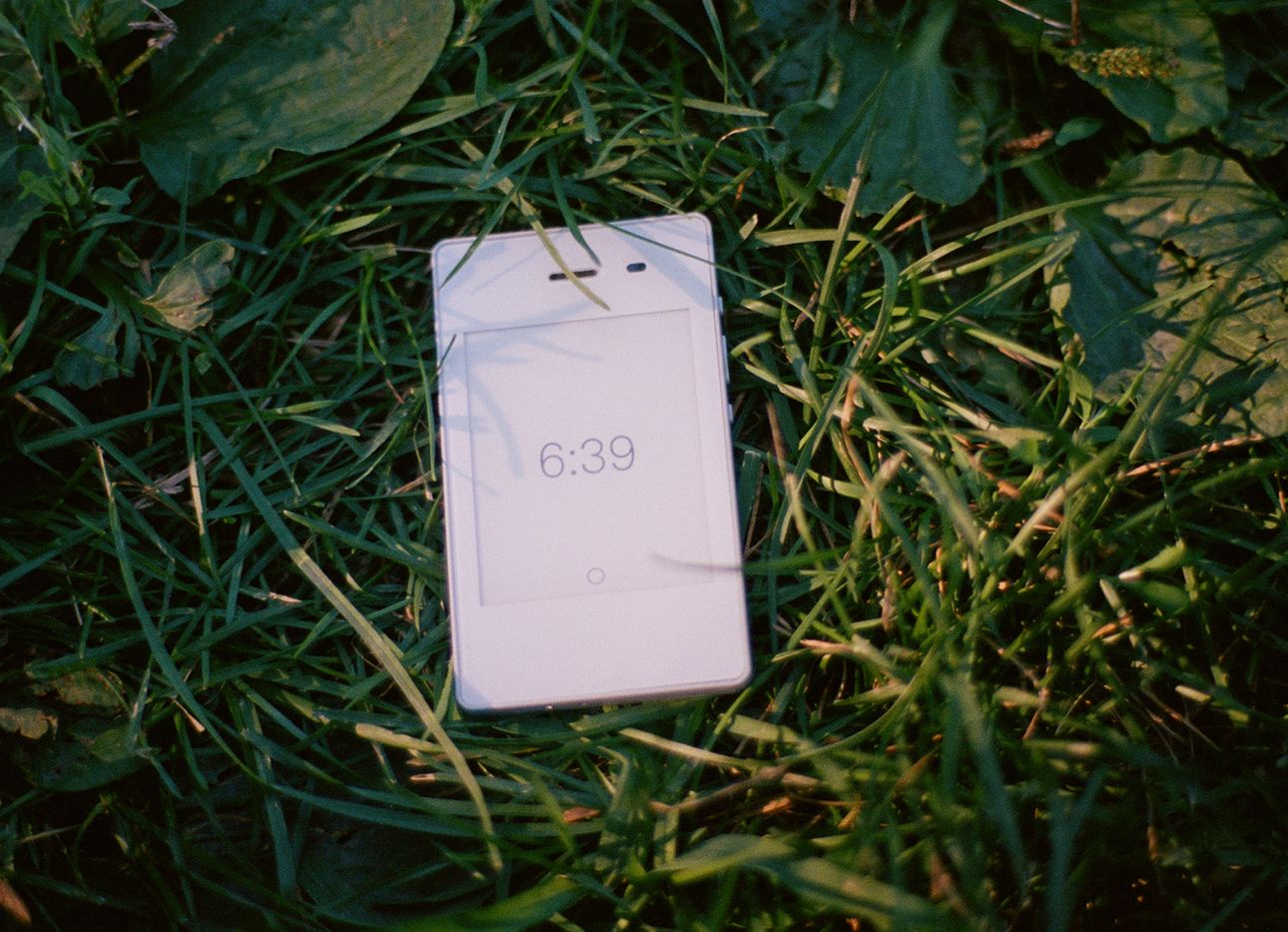
A Smartphone Alternative We Can Totally Get Behind
Americans spend an average of more than four hours a day on their smartphones—and it’s hardly innocent fun. A new study finds that smartphone addiction can have the same effect on the brain as drug addiction, reducing gray matter and delivering a dopamine rush that’s even likened to the high of snorting cocaine. For artist Joe Hollier, it took just one stint working in an experimental program at Google—where he was tasked to conceive the very apps designed to keep users glued to their screens—to convince him to take an about-face approach to tech. “I kind of said, well, geez, could being any more connected to my smartphone for another two hours a day be what I actually need,” he recalls, “or am I constantly craving escape and wishing I lived in a van off the grid?”
In 2014, Hollier joined forces with product designer Kaiwei Tang to launch Light, then the latest startup to offer a “dumb phone” under the premise that “a phone is a tool, and it should serve you as the user, not the other way around.” Its current model, the Light Phone II—touted as “a phone that actually respects you”—features a monochrome touchscreen and a smaller handheld size, with severely edited-down features. No social media feeds; no apps, push notifications, emails, or ads; and no camera. Still, the Light II is smarter than other designer dumb phones. Unlike Jasper Morrison’s phone for Punkt—which scraps an internet connection and touchscreen altogether in favor of static, calculator-like buttons (a design that philosopher and social scientist Christian Madsbjerg discusses his affinity for on Ep. 27 of our Time Sensitive podcast)—Light’s phone makes a few concessions. It has full texting capability and typography that’s easy on the eyes, and will soon roll out features for ride-sharing and listening to music (i.e., millennial essentials).
At first glance, you might simply mistake Light as an older iPhone model from the early aughts. But while Light may read as a nostalgic wish to tuck Pandora back into its box—and ironically gaining attention on Instagram along the way—Hollier attests it’s not about dialing back the clock on innovation, or intentionally staying a few steps behind current tech trends. For him, it’s simply presenting an alternative that makes a case for reclaiming idle time: “Many artists have claimed that boredom is the necessary aspect, if not the essential aspect of creativity.”